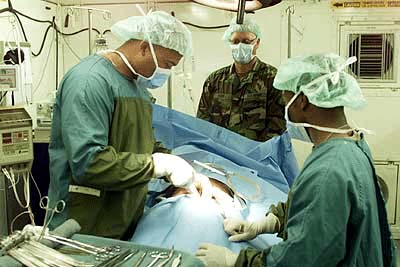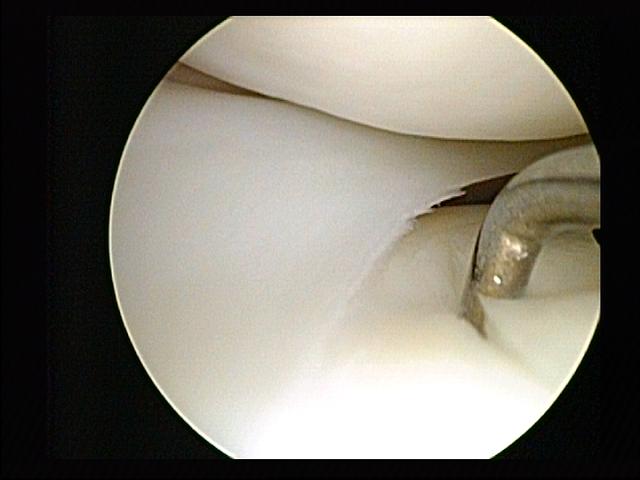|
Hemorrhoidectomy
Hemorrhoids (or haemorrhoids), also known as piles, are vascular structures in the anal canal. In their normal state, they are cushions that help with stool control. They become a disease when swollen or inflamed; the unqualified term ''hemorrhoid'' is often used to refer to the disease. The signs and symptoms of hemorrhoids depend on the type present. Internal hemorrhoids often result in painless, bright red rectal bleeding when defecating. External hemorrhoids often result in pain and swelling in the area of the anus. If bleeding occurs, it is usually darker. Symptoms frequently get better after a few days. A skin tag may remain after the healing of an external hemorrhoid. While the exact cause of hemorrhoids remains unknown, a number of factors that increase pressure in the abdomen are believed to be involved. This may include constipation, diarrhea, and sitting on the toilet for long periods. Hemorrhoids are also more common during pregnancy. Diagnosis is made by look ... [...More Info...] [...Related Items...] OR: [Wikipedia] [Google] [Baidu] |
Rectal Bleeding
Rectal bleeding refers to bleeding in the rectum, thus a form of lower gastrointestinal bleeding. There are many causes of rectal hemorrhage, including inflamed hemorrhoids (which are dilated vessels in the perianal fat pads), rectal varices, proctitis (of various causes), stercoral ulcers, and infections. Diagnosis is usually made by proctoscopy, which is an endoscopic test. Signs and symptoms Those with rectal bleeding may notice bright red blood in their stool. Symptoms associated with rectal bleeding include having several bowel movements in a day, feelings of incomplete rectal evacuation, straining, hard or lumpy stools, feelings of urgency, loose or watery stools, and leakage of bowel movement. Causes Bleeding from the rectal area could indicate premalignant polyps or colorectal cancer. Compared to colorectal cancer, anal lesions or benign colorectal conditions are far more common causes of rectal bleeding. Other causes of rectal bleeding include hemorrhoids, full-thick ... [...More Info...] [...Related Items...] OR: [Wikipedia] [Google] [Baidu] |
General Surgery
General surgery is a Surgical specialties, surgical specialty that focuses on alimentary canal and Abdomen, abdominal contents including the esophagus, stomach, small intestine, large intestine, liver, pancreas, gallbladder, Appendix (anatomy), appendix and bile ducts, and often the thyroid gland. General surgeons also deal with diseases involving the human skin, skin, breast, soft tissue, trauma (medicine), trauma, peripheral artery disease and hernias and perform endoscopic as such as gastroscopy, colonoscopy and laparoscopic procedures. Scope General surgeons may sub-specialise into one or more of the following disciplines: Trauma surgery In many parts of the world including North America, Australia and the UK, United Kingdom, the overall responsibility for major trauma, trauma care falls under the auspices of general surgery. Some general surgeons obtain advanced training in this field (most commonly surgical critical care) and specialty certification surgical critical ... [...More Info...] [...Related Items...] OR: [Wikipedia] [Google] [Baidu] |
Constipation
Constipation is a bowel dysfunction that makes bowel movements infrequent or hard to pass. The Human feces, stool is often hard and dry. Other symptoms may include abdominal pain, bloating, and feeling as if one has not completely passed the bowel movement. Complications from constipation may include hemorrhoids, anal fissure or fecal impaction. The normal frequency of bowel movements in adults is between three per day and three per week. Babies often have three to four bowel movements per day while young children typically have two to three per day. Constipation has many causes. Common causes include slow movement of stool within the colon, irritable bowel syndrome, and pelvic floor disorders. Underlying associated diseases include hypothyroidism, diabetes, Parkinson's disease, celiac disease, non-celiac gluten sensitivity, Vitamin B12 deficiency, vitamin B12 deficiency, colon cancer, diverticulitis, and inflammatory bowel disease. Medications associated with constipation in ... [...More Info...] [...Related Items...] OR: [Wikipedia] [Google] [Baidu] |
Acrochordon
A skin tag, or acrochordon (: acrochorda), is a small benign tumor that forms primarily in areas where the skin forms creases (or rubs together), such as the neck, armpit and groin. They may also occur on the face, usually on the eyelids. Though tags up to long have been seen, they are typically the size of a grain of rice. The surface of an acrochordon may be smooth or irregular in appearance and is often raised from the surface of the skin on a fleshy stalk called a peduncle. Microscopically, an acrochordon consists of a fibrovascular core, sometimes also with fat cells, covered by an unremarkable epidermis. However, tags may become irritated by shaving, clothing, jewelry or eczema. Etiology Skin tags are thought to occur from skin rubbing against skin, since they are often found in skin creases and folds. Studies have shown existence of low-risk human papillomaviruses 6 and 11 in skin tags, hinting at a possible role in their pathogenesis, although a 2012 study found no ... [...More Info...] [...Related Items...] OR: [Wikipedia] [Google] [Baidu] |
Thrombosis
Thrombosis () is the formation of a Thrombus, blood clot inside a blood vessel, obstructing the flow of blood through the circulatory system. When a blood vessel (a vein or an artery) is injured, the body uses platelets (thrombocytes) and fibrin to form a blood clot to prevent blood loss. Even when a blood vessel is not injured, blood clots may form in the body under certain conditions. A clot, or a piece of the clot, that breaks free and begins to travel around the body is known as an embolus. Thrombosis can cause serious conditions such as stroke and heart attack. Thrombosis may occur in veins (venous thrombosis) or in arteries (arterial thrombosis). Venous thrombosis (sometimes called DVT, deep vein thrombosis) leads to a blood clot in the affected part of the body, while arterial thrombosis (and, rarely, severe venous thrombosis) affects the blood supply and leads to damage of the tissue supplied by that artery (ischemia and necrosis). A piece of either an arterial or a v ... [...More Info...] [...Related Items...] OR: [Wikipedia] [Google] [Baidu] |
Anemia
Anemia (also spelt anaemia in British English) is a blood disorder in which the blood has a reduced ability to carry oxygen. This can be due to a lower than normal number of red blood cells, a reduction in the amount of hemoglobin available for oxygen transport, or abnormalities in hemoglobin that impair its function. The name is derived . When anemia comes on slowly, the symptoms are often vague, such as Fatigue, tiredness, weakness, shortness of breath, headaches, and a Exercise intolerance, reduced ability to exercise. When anemia is acute, symptoms may include confusion, lightheadedness, feeling like one is going to pass out, Syncope (medicine), loss of consciousness, and polydipsia, increased thirst. Anemia must be significant before a person becomes noticeably Pallor, pale. Additional symptoms may occur depending on the underlying cause. Anemia can be temporary or long term and can range from mild to severe. Anemia can be caused by blood loss, decreased red blood cel ... [...More Info...] [...Related Items...] OR: [Wikipedia] [Google] [Baidu] |
M 44 Anus 22
M, or m, is the thirteenth letter of the Latin alphabet, used in the modern English alphabet, the alphabets of several western European languages and others worldwide. Its name in English is ''em'' (pronounced ), plural ''ems''. History The letter M is derived from the Phoenician Mem via the Greek Mu (Μ, μ). Semitic Mem is most likely derived from a " Proto-Sinaitic" (Bronze Age) adoption of the "water" ideogram in Egyptian writing. The Egyptian sign had the acrophonic value , from the Egyptian word for "water", ''nt''; the adoption as the Semitic letter for was presumably also on acrophonic grounds, from the Semitic word for "water", '' *mā(y)-''. Use in writing systems English In English, represents the voiced bilabial nasal . The Oxford English Dictionary (first edition) says that is sometimes a vowel, such as in words like ''spasm'' and in the suffix ''-ism''. In modern terminology, this is described as a syllabic consonant (IPA: ). M is the ... [...More Info...] [...Related Items...] OR: [Wikipedia] [Google] [Baidu] |
Papyrus
Papyrus ( ) is a material similar to thick paper that was used in ancient times as a writing surface. It was made from the pith of the papyrus plant, ''Cyperus papyrus'', a wetland sedge. ''Papyrus'' (plural: ''papyri'' or ''papyruses'') can also refer to a document written on sheets of such material, joined side by side and rolled up into a scroll, an early form of a book. Papyrus was first known to have been used in Egypt (at least as far back as the First Dynasty of Egypt, First Dynasty), as the papyrus plant was once abundant across the Nile Delta. It was also used History of the Mediterranean, throughout the Mediterranean region. Apart from writing material, ancient Egyptians employed papyrus in the construction of other Artifact (archaeology), artifacts, such as reed boats, mats, rope, sandals, and baskets. History Papyrus was first manufactured in Egypt as far back as the third millennium BCE.H. Idris Bell and T.C. Skeat, 1935"Papyrus and its uses"(British Museum pam ... [...More Info...] [...Related Items...] OR: [Wikipedia] [Google] [Baidu] |
American Society Of Colon And Rectal Surgeons
The American Society of Colon and Rectal Surgeons (ASCRS), formerly the American Proctologic Society, is a professional society for surgeons specializing in colorectal surgery. It is one of the oldest surgical societies, having been established in 1899. History The organization was established as the American Proctologic Society in 1899,Judith L. Trudel, M.D., ''The American Society of Colon and Rectal Surgeons and Surgical Education: What Does Your Society Do for You?'', Clin Colon Rectal Surg. 2012 Sep; 25(3): 181–184. . at a meeting held in Columbus, Ohio:''Transactions of the Annual Meeting of the American Protologic Society'' (1940), p. 12. The name of the organization was changed to American Society of Colon and Rectal Surgeons in 1973 "to indicate more clearly the scope of its specialty".Roslyn G. Nitzberg, ''Choosing a Medical Specialty'' (1990), Vol. 7, p. 9. Activities The ASCRS has described its activities as follows: The ASCRS offers continuing medical educati ... [...More Info...] [...Related Items...] OR: [Wikipedia] [Google] [Baidu] |
Minimally Invasive Procedure
Minimally invasive procedures (also known as minimally invasive surgeries) encompass surgical techniques that limit the size of incisions needed, thereby reducing wound healing time, associated pain, and risk of infection. Surgery by definition is invasive, and many operations requiring incisions of some size are referred to as ''open surgery''. Incisions made during open surgery can sometimes leave large wounds that may be painful and take a long time to heal. Advancements in medical technologies have enabled the development and regular use of minimally invasive procedures. For example, endovascular aneurysm repair, a minimally invasive surgery, has become the most common method of repairing abdominal aortic aneurysms in the US as of 2003. The procedure involves much smaller incisions than the corresponding open surgery procedure of open aortic surgery. Interventional radiologists were the forerunners of minimally invasive procedures. Using imaging techniques, radiologi ... [...More Info...] [...Related Items...] OR: [Wikipedia] [Google] [Baidu] |
Hemorrhoidal Artery Embolization
Hemorrhoidal artery embolization (HAE, or hemorrhoid artery embolization) is a non-surgical treatment of internal hemorrhoids. The procedure involves blocking the abnormal blood flow to the rectal (hemorrhoidal) arteries using microcoils and/or microparticles to decrease the size of the hemorrhoids and improve hemorrhoid related symptoms, especially bleeding. It is a minimally invasive therapy that can be performed as an outpatient procedure. Procedure HAE begins when a catheter is inserted into the femoral or radial artery through a small incision. The catheter is then carefully navigated through the arterial system with x-ray guidance until it reaches the branches of the superior rectal artery The superior rectal artery (superior hemorrhoidal artery) is an artery that descends into the pelvis to supply blood to the rectum. Structure The superior rectal artery is the continuation of the inferior mesenteric artery. It descends into the ... that supply blood to the hemorr ... [...More Info...] [...Related Items...] OR: [Wikipedia] [Google] [Baidu] |








